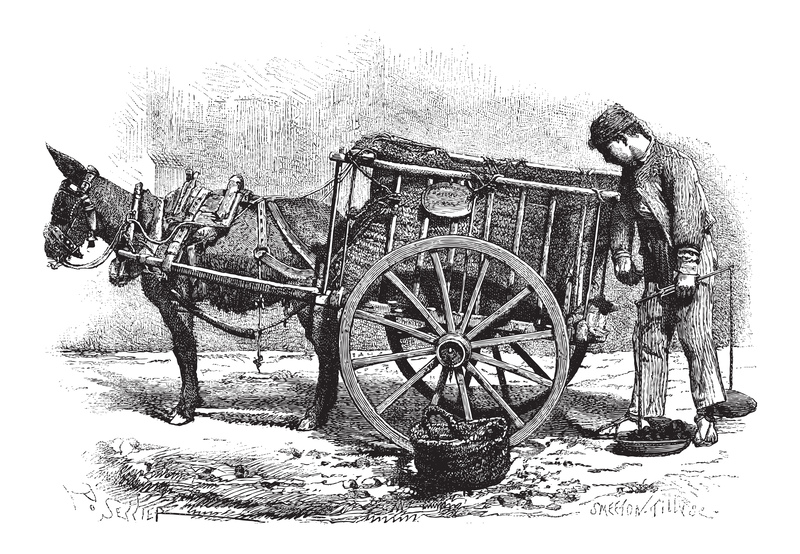From Antiquity to Modern Times: The Evolution of Waste Management
Waste management is an essential component of human civilization, reflecting both our ingenuity and our relationship with the environment. The evolution of waste management spans centuries, showcasing humanity's progress from rudimentary disposal methods to innovative, sustainable solutions that seek harmony with nature. This comprehensive article explores the historical journey of managing waste, highlighting key milestones, societal shifts, and modern-day advancements in waste management practices.

Understanding Waste Management: An Overview
Waste management encapsulates the collection, transportation, processing, recycling, and disposal of waste materials. Its aim is to reduce environmental impact, protect public health, and conserve resources. The concept has evolved remarkably from ancient times, adapting to population growth, urbanization, and technological advancements.
- Early Methods: Simple disposal or burning of wastes.
- Medieval Solutions: Community regulations and rudimentary sanitation.
- Industrial Revolution: Rise in waste and technological interventions.
- Modern Approaches: Recycling, sustainability, and zero-waste goals.
Let's journey through time to witness how human waste management strategies have developed.
Waste Management in Antiquity: The Genesis
Early Civilizations and their Waste Practices
Ancient societies recognized the necessity of waste disposal, albeit in basic forms. Archeological findings suggest that as far back as 4000 BCE, people in Mesopotamia, Greece, and other early settlements employed primitive forms of refuse management.
- Mesopotamia: Residents placed garbage in pits located outside their homes or villages. Over time, these evolved into organized communal dumps.
- Ancient Egypt: Wealthier citizens commissioned servants to remove rubbish from their homes, illustrating early forms of outsourcing labor for cleanliness.
- Classical Greece and Rome: Streets often doubled as garbage sites, but the establishment of city-wide drainage and sewage systems marked the beginnings of urban sanitation.
Notably, in ancient Athens, garbage was transported outside city walls by special scavenger carts as early as 500 BCE--an important historical milestone in solid waste control.
The Roman Empire: Pioneering Sanitation
The Roman civilization is celebrated for innovations in waste and water management systems. They constructed elaborate aqueducts, sewers (like the Cloaca Maxima), and public bathhouses, which helped control waste and improve urban cleanliness.
- Public conveniences: Rome featured public latrines, flushed by running water, an advancement far ahead of its time.
- Household waste removal: Many affluent Romans paid workers to collect and dispose of their garbage outside city limits.
Nevertheless, not all waste was adequately managed, leading to periodic outbreaks of disease and squalor, especially in less affluent neighborhoods.
Middle Ages: Regression and Its Aftermath
Sanitation Challenges in Medieval Cities
Following the fall of Rome, European sanitation standards largely regressed. Many medieval towns coped poorly with burgeoning populations:
- Streets were often clogged with household waste, animal droppings, and sewage.
- Latrines emptied directly into rivers, contaminating water supplies.
- Waste was sometimes tossed out of windows onto the streets below, a common practice in slim alleyways.
The lack of structured waste disposal contributed to rampant disease and pandemics, most notably the Black Death in the 14th century.
Origins of Waste Regulation
Medieval municipal authorities gradually recognized the urgent need for better waste management:
- Some cities (e.g., London, Paris) established rules and fines for improper disposal of refuse.
- Night soilmen were employed to remove human waste in urban areas.
- Early efforts at recycling emerged, such as utilizing organic waste in agriculture.
These rudimentary regulations laid the groundwork for the transformation of waste management systems in the centuries to follow.
Industrial Revolution: The Waste Problem Intensifies
Urbanization and Exploding Waste Volumes
The 18th and 19th centuries ushered in the Industrial Revolution, bringing:
- A massive shift from rural to urban living.
- Rapid population growth in cities.
- Industrial production, leading to new forms of waste (chemical, hazardous, industrial).
Cities struggled to cope--streets overflowed with waste, rivers became polluted, and public health suffered dramatically.
Modernization of Waste Collection and Disposal
Rising health concerns spurred innovations in waste handling:
- First municipal garbage collection: In 1875, London introduced formal trash collection services to combat unsanitary conditions.
- Sanitary landfills: Early versions of landfills appeared, providing designated sites for controlled dumping.
- Incineration: The first waste incinerators ("destructors") were constructed in England by the late 19th century.
- Street cleaning: Horse-drawn street sweeper machines improved urban hygiene.
These changes marked a significant leap in the development of urban waste management, paving the way for further innovation.
Twentieth Century: A Paradigm Shift
Landfills and Beyond: The Modern Waste Landscape
The 20th century witnessed dramatic transformations in how societies managed waste:
- Engineered landfills: Advancements included the use of liners and leachate collection to control environmental impacts.
- Plastics and synthetic materials: The postwar boom saw exponential growth in packaging waste and single-use products.
- Recycling programs: Initiated in major cities to curb landfill use and recover valuable materials.
- Composting: Organic waste diversion became more common in both households and municipalities.
- Hazardous waste regulations: Legislation was enacted to safely manage chemicals, medical waste, and electronic waste.
The focus shifted from mere disposal to a more systematic approach--emphasizing sustainable waste management, resource recovery, and pollution control.
Globalization and E-Waste
As globalization accelerated, so did the complexity of waste streams. Electronics, once rare, became ubiquitous, leading to burgeoning electronic waste (e-waste) management challenges.
- New international treaties such as the Basel Convention regulated hazardous waste trade.
- Specialized recycling processes for electronics, batteries, and appliances were established.
- Public awareness campaigns emerged to highlight recycling and responsible disposal.
Waste Management in the 21st Century: Innovation and Sustainability
The Shift Toward Sustainability
Modern societies recognize that effective waste management solutions are vital for health, resource conservation, and climate change mitigation. The 21st century has seen a dramatic pivot toward sustainable, circular approaches.
- Zero-waste initiatives: Cities such as San Francisco aim for zero landfill waste by maximizing reuse, recycling, and composting.
- Extended producer responsibility (EPR): Manufacturers are held accountable for the post-consumer fate of their products.
- Advanced recycling technologies: Mechanical and chemical recycling enable recovery of more materials.
- Energy from waste: Incinerators now generate energy, providing dual benefits of waste reduction and electricity production.
Public education and digital technologies have enhanced participation in recycling and waste reduction programs, making modern waste management increasingly community-focused and technology-driven.
The Role of Policy and International Cooperation
As waste challenges transcend borders, international cooperation has become crucial:
- Global treaties govern hazardous waste movement and strive for safe, ethical disposal.
- The EU's Waste Framework Directive sets rigorous targets for recycling and landfill reduction.
- UN Sustainable Development Goals promote sustainable material management worldwide.
Nations now exchange best practices, invest in research, and encourage innovation to build the next generation of waste management technologies.

Future Trends in Waste Management: Toward a Circular Economy
Key Innovations and Technologies
The next era of waste management evolution centers on the concept of the circular economy: a model that aims to minimize waste by keeping resources in use for as long as possible.
- AI and automation: Smart bins, AI-based sorting, and robotic recycling enhance efficiency and precision.
- Biotechnologies: Microbes and enzymes break down plastics, compost organic waste, and remediate contaminated sites.
- Internet of Things (IoT): Sensors track bin fill levels, optimize truck routes, and reduce emissions.
- Design for recyclability: Products are engineered to be easily disassembled and recycled.
These advancements are steering society toward a future where waste is minimal, and materials are valued as resources.
Conclusion: Lessons from the Past, Priorities for the Future
The history of waste management is a testament to human adaptability and the persistent pursuit of healthier, cleaner environments. From ancient refuse pits to smart recycling plants, our journey reveals both remarkable progress and ongoing challenges.
Key takeaways include:
- Societies that prioritize effective waste management enjoy healthier, more livable cities.
- Technological innovation and policy reform are crucial drivers of progress.
- Individuals, businesses, and governments each play a vital role in shaping waste solutions.
- The ultimate goal is a world where waste is not an inevitable byproduct, but a valuable input to new cycles of production and consumption.
As we look ahead, sharing knowledge, adopting cutting-edge solutions, and embracing the principles of sustainability will ensure that the evolution of waste management continues to serve both people and planet.